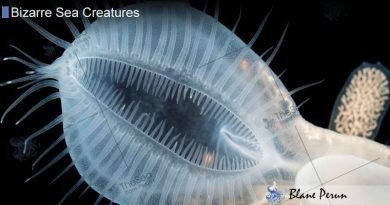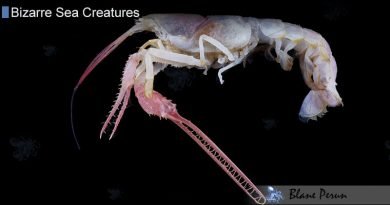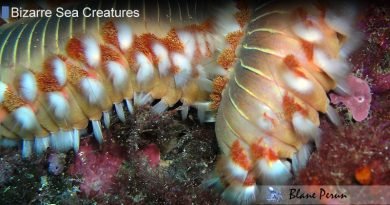Yeti Crab
Yeti Crab: Deep-Sea Marvel
The abyssal seafloor remains one of Earth’s least explored realms, and few organisms symbolize its strangeness better than the Yeti Crab. This overview synthesizes current scientific knowledge about the species’ habitat, morphology, behavior, and ecological significance—framing the Yeti Crab as a flagship example of how bizarre sea creatures adapt to extreme deep-sea environments.
The official scientific name of the Yeti Crab is Kiwa hirsuta (noted for its “hairy” appearance). First described in 2005 on the Pacific–Antarctic Ridge during a Monterey Bay Aquarium Research Institute expedition, this decapod crustacean is distinguished by setae-covered claws that host dense bacterial mats—likely an adaptation for nutrition and detoxification in chemically harsh vent fields. In its ecosystem it may share water columns with other specialized organisms, including the crossota norvegica jellyfish characteristics, whose transparency and bioluminescence illustrate convergent strategies for life in darkness. Together, these traits underscore the finely tuned balances that define deep-ocean biodiversity.
True to the “yeti” moniker, the crab’s pallid body and reduced, unpigmented eyes reflect life in perpetual night; the species is widely considered functionally blind. Its elongated chelae (pincers) bear conspicuous, hair-like setae that cultivate symbiotic bacteria—an apparent aid to processing sulfide-rich fluids near hydrothermal vents. Adults can reach ~15 cm in length. The species occupies a unique community alongside other vent-associated fauna, from invertebrates to fishes such as sunfish species and their habitats, demonstrating how extreme settings can sustain surprising trophic complexity with broad implications for understanding life’s adaptability on Earth and beyond.
The Yeti Crab’s diet is not fully resolved, but multiple lines of evidence point to a mixed feeding strategy. While capable of scavenging or predation, it also consumes the filamentous bacteria grown on its own setae. Characteristically, the crab “farms” these microbes by rhythmically waving its limbs in vent effluent to enhance bacterial productivity—an elegant example of behavioral engineering in the deep sea.
Habitat and Distribution
The Yeti Crab inhabits the deep ocean near hydrothermal vents, where tectonic spreading centers release superheated, mineral-laden fluids. These steep chemical gradients support chemosynthetic food webs. Confirmed populations occur along the Pacific–Antarctic Ridge and the East Pacific Rise, with closely related Kiwa species described at other vent provinces.
Physical Characteristics
Named for its shaggy, hair-like setae, the Yeti Crab is immediately recognizable. The setae are not ornamental: they provide substrate for bacterial communities integral to the crab’s survival. With a white, near-translucent exoskeleton, reduced eyes, and a typical adult length around 15 centimeters, its phenotype reflects selection for low-light, high-pressure, sulfide-rich environments.
Behavior and Adaptations
Adaptations converge on managing toxicity and obtaining energy where sunlight is absent. Filamentous bacteria coating the setae can metabolize reduced chemicals from vent fluids, aiding detoxification and nutrition. The crab’s limb-waving behavior positions its setae within optimal flow, enhancing microbial growth—a specialized, symbiotic “farming” strategy rare among crustaceans.
Diet and Feeding Habits
Bacterial farming appears central to the Yeti Crab’s diet: individuals harvest and ingest their cultivated biofilms. Opportunistic feeding on small invertebrates or carrion likely supplements this primary source, enabling resilience as vent flow and chemistry fluctuate over time.
Reproduction and Lifespan
Reproductive biology is still being resolved, but like many deep-sea decapods, females brood fertilized eggs until hatching. Larval dispersal probably relies on currents along ridge axes to locate new vent fields. Lifespan estimates vary and remain under study, reflecting the logistical challenges of long-term observation in the deep ocean.
Role in the Marine Ecosystem
As a vent-community specialist, the Yeti Crab occupies a key niche in chemosynthetic food webs. It supports higher trophic levels as prey while simultaneously engineering microbial productivity on its own setae—linking chemical energy from the Earth’s interior to biological energy available to the broader vent ecosystem.
Conservation Status
Because Yeti Crabs inhabit remote, patchy vent habitats, formal conservation assessments remain limited. Nevertheless, potential threats—such as deep-sea mining, climate-driven shifts in ocean chemistry, and disturbance of vent communities—underscore the need for precautionary management and continued monitoring.
Human Interest and Cultural Impact
Since its discovery, the Yeti Crab has become an icon of deep-sea exploration—a charismatic ambassador for vent ecosystems and a compelling case study in extreme adaptation. Its unusual appearance, bacterial farming, and symbiotic strategies continue to inspire scientific inquiry and public fascination with the ocean’s most bizarre inhabitants.




